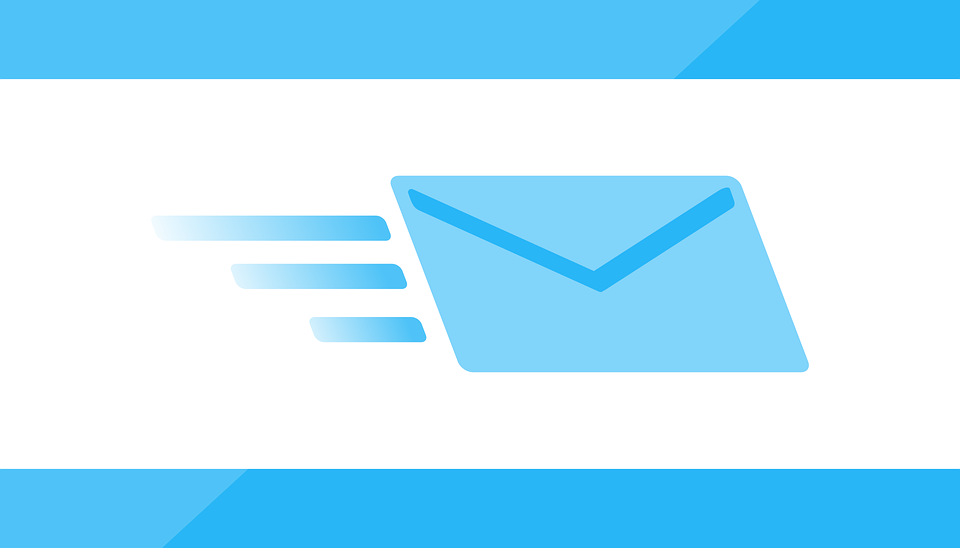
What is a Clearing Account?
 A clearing account is a financial account that’s used to temporarily hold funds until those funds can be transferred into a separate account for long-term storage/use. If a company is preparing its end-of-year books, for instance, it may place new revenue into a clearing account. After completing its books, the company may then move those funds from the clearing account to a different account.
A clearing account is a financial account that’s used to temporarily hold funds until those funds can be transferred into a separate account for long-term storage/use. If a company is preparing its end-of-year books, for instance, it may place new revenue into a clearing account. After completing its books, the company may then move those funds from the clearing account to a different account.
Do I Have to Use a Clearing Account?
Of course not! There’s no law or rule requiring companies to use a clearing account. With that said, many business owners and accountants find it useful in certain circumstances, such as holding new funds for the purpose of tracking past revenue. If this is something you are interested in doing, keep reading for a step-by-step walkthrough on how to set up a clearing account using the Quickbooks accounting software.
How to Set Up a Clearing Account in Quickbooks
To set up a clearing account in Quickbooks (Desktop version), access Lists > Chart of Accounts, at which point you can right-click anywhere on the screen and choose “New.” From here, click the “Bank” icon in the “Add New Account” window. While you can technically choose from one of several different types of accounts, it’s recommended that you choose bank for the purpose of creating a clearing account. Bank accounts allow you to pay into a bank account using the “Receive Payments” or “Make Deposits” options. Furthermore, you can pay out of a bank account using the “Write Checks” or “Pay Bills” options.
After selecting create new bank account, click “Continue.” From here, enter “Clearing Account, Barter Account or Wash Account” in the “Account Name” field. Double-check to ensure that no balance is entered for the opening balance field (it should be $0). When you are finished, click “Save & Close” to complete the process.
How to Use a Clearing Account in Quickbooks
To use a clearing account in Quickbooks, you’ll typically perform the following:
- Create a new journal entry
- Add the accounts receivable or accountants payable (this is where you are receiving the money from)
- Save the journal entry
- Create an additional journal entry
- Add the clearing account
- Add the accounts receivable or accountants payable (this is where you are moving the money to)
- Link the journal entries together in either the Pay Bills or Receive Payments
Have anything that you would like to add? Let us know in the comments section below!

How to Change Default Email Message in Quickbooks
 Want to change the default message of your emails created in Quickbooks? If you’re a business owner, you probably want to make your emails look as professional as possible. By default, Quickbooks automatically completes email fields like the subject line, recipient’s name and other elements. In some cases, this is perfectly fine. In other cases, though, you can achieve a more professional-looking email by modifying these elements yourself. So, how do you change the default email message in Quickbooks?
Want to change the default message of your emails created in Quickbooks? If you’re a business owner, you probably want to make your emails look as professional as possible. By default, Quickbooks automatically completes email fields like the subject line, recipient’s name and other elements. In some cases, this is perfectly fine. In other cases, though, you can achieve a more professional-looking email by modifying these elements yourself. So, how do you change the default email message in Quickbooks?
Thankfully, Quickbooks makes changing the default email template a breeze. After logging into your Quickbooks account, choose Edit > Preferences > Send Forms > Company Preferences. From here, you can change the default email templates for forms and reports. If you want to add an invoice number to your invoices’ subject lines, for instance, simply click on “Change default for Invoices.” This will bring up several different email templates from which you can choose.
You’ll also notice a field to include your own verbiage in the body of your invoice emails, or you can even add a BCC email address if you want a copy sent back to your or someone who works for you. This area of the Quickbooks interface allows users to change email templates for many forms and reports, some of which include invoices, estimates, statements, sales orders, sales receipts, credit memos, purchase orders, reports, pay stubs, overdue invoices, invoices approaching due date.
But what if you want to change the signature of your emails? Well, this is also a feature supported by Intuit’s long-running and highly popular line of business accounting software.
To change your default email signature, log back into your Quickbooks account and choose the Gear icon at the top right, followed by Your Company > Account and Settings > Sales > Messages. In the field titled “Default email message send with sales forms,” click the drop-down menu next to the “Sales” form box and select “Invoice.” From here, you can update your email signature in the “Email message” box. When you are finished, click “Done.” Congratulations, you’ve just changed your default email signature!
Keep in mind that nuances between Quickbooks Online and Quickbooks Desktop may result in different steps for changing the default email message. The steps listed above, however, should guide you in the right direction. If you still need assistance, seek help from your respective hosting provider.
Did this tutorial work for you? Let us know in the comments section below!

Why Does Quickbooks Keep Losing its Connection?
 Have you encountered the “Connection Has Been Lost” error message when attempting to use the Quickbooks accounting software. It’s difficult to keep track of your transactions without an active connection. While this error is uncommon, it does occur in some instances, specifically when the user is accessing his or her company file. So, what causes the connection lost error message and how do you fix it?
Have you encountered the “Connection Has Been Lost” error message when attempting to use the Quickbooks accounting software. It’s difficult to keep track of your transactions without an active connection. While this error is uncommon, it does occur in some instances, specifically when the user is accessing his or her company file. So, what causes the connection lost error message and how do you fix it?
There are several common causes of the connection lost error message, one of which is the company file being stored on another computer or device and the connection to that computer or device was disrupted. Whether the computer locally or off-site, you need a connection to the computer; otherwise, you won’t be able to access your company file (assuming it’s stored there).
Other common causes of the connection lost error message include sleep or hibernation settings on the same computer that’s storing the company file; two or more computers on a network configured to host the company file (only a single computer should host it); computers in multi-user installation are running different versions of Quickbooks; and data in the company file is damaged or corrupt. Regardless of what’s causing your lost connection error message, however, there are a few quick and easy solutions that should resolve it.
To fix the lost connection error message in Quickbooks, you should first try to identify the root cause through process of elimination. Go through each of the causes mentioned above and eliminate them one by one. If your company file being stored on another computer or device is causing the problem, try restarting the computer to fix the connection. If the problem persists, check your computer hardware and network configuration.
If hibernation or other power management settings in Windows are causing the lost connection error message, you should access and disable them. If more than one computer on a network is hosting the company file, open Quickbooks and choose File > Utilities, at which point you should see either “Stop Hosting Multi-User Access” or “Host Multi-User Access.” If “Stop Hosting Multi-User Access” appears, hosting is enable and you can proceed with the on-screen instructions. If the latter option appears, select it to enable hosting on this computer and proceed with the on-screen instructions.
If you have computers in multi-user installation running different versions of Quickbooks, open the software and choose Help > Update Quickbooks > Update Now > close and reopen the software after download is complete > click Install Now and follow the on-screen instructions.
Did this tutorial work for you? Let us know in comments section below!

How to Find Unapplied Payments in Quickbooks
 It’s not uncommon for business owners to receive payments, only to leave them unapplied in their Quickbooks account. Without applying a payment, however, it’s not going to show up correctly, in which case you’ll need to fix it ASAP. The good news is that Intuit’s popular line of accounting software offers a quick and easy feature to find and apply these payments. So if you’re dealing with one or more unapplied payments in Quickbooks, keep reading for a step-by-step walkthrough on how to fix it.
It’s not uncommon for business owners to receive payments, only to leave them unapplied in their Quickbooks account. Without applying a payment, however, it’s not going to show up correctly, in which case you’ll need to fix it ASAP. The good news is that Intuit’s popular line of accounting software offers a quick and easy feature to find and apply these payments. So if you’re dealing with one or more unapplied payments in Quickbooks, keep reading for a step-by-step walkthrough on how to fix it.
To apply an unapplied payment, go ahead and log into your Quickbooks account. From the main menu, click the Creative Invoice option under the Customers heading, after which you should fill out the requested information. Applying an unapplied payment requires an invoice, so you’ll need to create an invoice for the customer whom gave you this payment. When you are finished, click Save to complete the changes, followed by “Receive Payments.”
Next, choose Credits under the Receive Payments options, followed by Unapplied Payment. Click Save and Close and you are finished! The payment should now be applied to your account, at which point you should find it under “Closed.”
Now that you know how to apply an unapplied payment in Quickbooks, you might be wondering how to clear an overpayment. We’re only human, so mistakes are bound to happen. But overpayments can throw off your books, so you’ll need to fix them as well.
If a customer accidentally overpaid you, you’ll need to issue a refund. This is done by opening the credit memo you want to use for the refund > click Refund at the top of the window > double-check to ensure all of the information displayed is correct (leave Accounts Receivable as the account in the details area for proper refunds) > click OK.
You aren’t out of the woods just yet. Even after recording both the credit memo and check, you’ll need to connect the check to the credit memo so that Quickbooks can track it correctly. This is done by choosing Customers > Receive Payments > enter the customer to whom you want to issue the refund > choose the option titled “Apply Existing Credits” > on the Refund line, enter the check amount in the payment column.
Did this tutorial work for you? Let us know in the comments section below!
How to Fix an Incorrect Deposit in Quickbooks
 So, you accidentally recorded an erroneous deposit in Quickbooks, and now you’re trying to fix it? We’re only humans, so mistakes such as this are bound to happen sooner or later. But even a single erroneous transaction can throw off your entire books, which is why it’s important to fix them ASAP. Follow the steps listed below to fix incorrect deposits in Quickbooks.
So, you accidentally recorded an erroneous deposit in Quickbooks, and now you’re trying to fix it? We’re only humans, so mistakes such as this are bound to happen sooner or later. But even a single erroneous transaction can throw off your entire books, which is why it’s important to fix them ASAP. Follow the steps listed below to fix incorrect deposits in Quickbooks.
It’s important to note that there are two instances that can cause payments and receipts to end up missing from your Bank Deposits section in Quickbooks. This includes entering the wrong deposit option (e.g. fund were deposited directly to your bank account), or they were added to the wrong deposit by accident. Either way, it’s frustrating when you check on a deposit, only to find that it’s no longer in your account.
First and foremost, you’ll need to find the incorrect deposit in your Quickbooks account. If it was a payment in an Invoice, log into your Quickbooks account and choose Transaction > Sales, after which you should choose the correct payment or sales receipt, double-check to ensure it is marked Deposit to Undeposited funds, and click Save.
But if you marked the payment correctly, you’ll need to check for the word “Deposit: Amount of $$$ on [date],” which occurs below the deposit options. This indicates the money was already deposited into the respective account. Now, if this is the deposit that you entered incorrectly, you’ll need to fix it by clicking the date listed, after which you’ll see a new window for the Bank Deposit options. You can click this field to open the deposit screen and clear the erroneous information, followed by Save to complete the changed. This should bring you back to the payment/sales receipt, or register, after which you should click Save one more time. Return to the Bank Deposit screen and add the payment again, but this time using the correct information.
Following the steps outlined above should set you on the right path to fixing your incorrect deposit. Ideally, you should double-check your deposits before making them to ensure they are correct. Going over the information two or even three times is guaranteed to minimize errors such as this. However, mistakes are bound to happen. And when you make an incorrect deposit, you’ll need to fix it by following the advice listed here.
Did this tutorial work for you? Let us know in the comments section below!
Dealing with Damaged Data in Quickbooks
 Have you encountered damaged data in your Quickbooks account? If so, you should take the necessary steps to find and fix the problem. Damaged damage can prevent otherwise essential tasks from occurring, such as matching your books with your financial transactions. So, follow these steps to repair damaged data in Quickbooks.
Have you encountered damaged data in your Quickbooks account? If so, you should take the necessary steps to find and fix the problem. Damaged damage can prevent otherwise essential tasks from occurring, such as matching your books with your financial transactions. So, follow these steps to repair damaged data in Quickbooks.
Before we begin, it’s important to note that you should create a backup of your company file. This reduces the risk of data loss while giving you peace of mind knowing that if you make a mistake — or if you accidentally delete an important item — you’ll still have all of your necessary account information.
When you’re ready to begin, go ahead and log into your Quickbooks account to run the Rebuild Data Utility. As you may already know, this tool is designed to identify and fix common problems associated with Quickbooks. Intuit recommends using it whenever you are prompted to by a the program, or when a Help or knowledge page suggests you do so.
To rebuild your data, access File > Utilities > Rebuild Data, at which you should choose “OK” when a message displays asking you to back up your company file. Keep in mind that your computer may also display a message saying “Quickbooks is not responding,” although this should go away within a few minutes. Be patient and wait for Quickbooks to finish processing the Rebuild Data tool. When it’s finished, you’ll see a new message appear saying “Rebuild has completed.” You should then run the Verify Data tool to check and see if there’s any remaining data damaged.
Of course, if this doesn’t work, you can always restore a backup copy of your Quickbooks company file. Simply insert the disk or drive into your company and access File > Open or Restore Company, at which point Quickbooks should launch the wizard tool. Choose “Restore a backup copy” and proceed by clicking “Next.” Click “Local backup,” followed by Next. This should open a new window, at which point you can choose the location of your backup file and click “Open.” Proceed with the on-screen instructions and Quickbooks will begin to restore your backup company file. Sorry if you were expecting more, but that’s all it takes to restore a backup company file in Quickbooks!
Did this tutorial work for you? Let us know in the comments section below!
How to Create and Send an Invoice in Quickbooks
 If you’re a business owner who uses invoices, you might be wondering if Quickbooks supports them. And if so, how to create and send invoices using the accounting software. Well, Quickbooks does support invoices, and we’re going to walk you through the steps of using them.
If you’re a business owner who uses invoices, you might be wondering if Quickbooks supports them. And if so, how to create and send invoices using the accounting software. Well, Quickbooks does support invoices, and we’re going to walk you through the steps of using them.
To create an invoice in Quickbooks, log into your account and access the Home page. From here, choose Invoices just below the Customers column, at which point you’ll see a new invoice creation form displayed on your screen.
Next, you’ll need to complete the invoice creation form, starting with the customer’s name. In the Customer name field, click the drop-down box to select the respective customer to whom you wish to send the invoice. Granted, if you haven’t added the customer to your Quickbooks account, you can do so by clicking the drop-down menu and scrolling to the top where there’s an “Add New” option.
In the customer email address field, you should notice Quickbooks automatically adding this information. If you did not enter an email address for the customer, however, the field will be left blank. You can enter the email address directly in this field, however, at which point it will automatically update the respective customer’s profile in your Quickbooks account.
For the billing address field, this information should also be automatically added by Quickbooks. Like the email address, however, it will remain blank if you didn’t enter a billing address in the customer’s profile.
Many users struggle with the “Terms” field, which is undoubtedly somewhat confusing, especially to newcomers. The terms field is used to describe the number of days the customer has to pay the invoice. You can change the payment terms by clicking the drop-down menu associated with this field.
In the date date, you should include the date on which you gave the customer the invoice. Normally, Quickbooks will complete this field automatically, meaning you won’t have to add any extra information. If it does not, however — or if it adds the wrong date — you should manually enter the date.
You aren’t out of the woods just yet. There are a few other fields you must complete when creating an invoice, including the Qty (quantity), rate, description, and amount. When you are finished adding this information, you can create the invoice using the specified data.
Did this tutorial work for you? Let us know in the comments section below!
How to Record a Wire Transfer in Quickbooks
 It’s not uncommon for businesses to send or receive money using wire transfers. Also known simply as a bank transfer, it’s a quick, easy and efficient way to transfer money between two parties. But if you plan on using wire transfers in your day-to-day operations, you’ll need to record it in your Quickbooks account. Keep reading for a step-by-step walkthrough on how to record wire transfers.
It’s not uncommon for businesses to send or receive money using wire transfers. Also known simply as a bank transfer, it’s a quick, easy and efficient way to transfer money between two parties. But if you plan on using wire transfers in your day-to-day operations, you’ll need to record it in your Quickbooks account. Keep reading for a step-by-step walkthrough on how to record wire transfers.
You’ll probably notice that Quickbooks doesn’t have a feature specifically for wire transfers. Nonetheless, recording a wire transfer is still a relatively easy and straightforward task, which is accomplished using either a Cash Expense or Deposits feature (depending on whether it’s a payment or earned money).
If you’re making a payment with a wire transfer, you’ll need to use the Cash Expense feature in Quickbooks. This is done by logging into your account and choosing the plus icon > Expense, at which point you should enter “Wire Xfer” or Wire Transfer” in the “Ref no.:” field (this is used strictly for reporting purposes, so feel free to include your own label.”
Next, fill in the “Date” and “Amount” fields with the appropriate information: the Date field should include the date on which the wire transfer took place, while the Amount field should contain the total amount of the wire transfer. You can also enter the vendor or store associated with the wire transfer in the “Payee” field (this step is optional).
In the “Account” field, select the expense account to track this transaction. When you are finished, click “Save” to save the changes.
If you’re receiving money using a wire transfer, you should use the “Make Deposit” feature. This is done by clicking the + icon > Bank Deposit > Deposit To > choose the bank account receiving the deposit > complete the Date, Received From, Account, Payment Method and Account fields. When finished, click “Save” the save the changes.
It’s important to note that fees are often attached to wire transfers, typically to the receiving party. If you have to pay a fee for receiving a wire transfer, you should record it in the Account and Amount fields. Using the Account field to select the expense account that you wish to track the fee, while the Amount field should contain the total amount of the fee, expressed as a negative number.
Sorry if you were expecting more, but that’s all it takes to record a wire transfer in Quickbooks!
Did this tutorial work for you? Let us know in the comments section below!
How to Track Credit in Quickbooks
 Does your business have one or more lines of credit? Well, you certainly aren’t alone. Most businesses use at least some credit to fund their day-to-day operations. It’s important to keep track of your credit — a task that’s made easy thanks to Quickbooks.
Does your business have one or more lines of credit? Well, you certainly aren’t alone. Most businesses use at least some credit to fund their day-to-day operations. It’s important to keep track of your credit — a task that’s made easy thanks to Quickbooks.
Tracking a line of credit in Quickbooks is pretty much the same as tracking a credit card. In fact, you’ll actually create a new credit card account in Quickbooks. To do this, click the Gear-shaped icon > Chart of Accounts > New. From here, you should choose “Credit Card” for the type of account, followed by Next. You will then need to enter more information about the line of credit. Follow the instructions on screen while leaving the account balance blank (the account balance should start at $0). After entering the required information, click Finish.
Now if you want to record a line or credit that was extended to your business, you’ll need to follow a slightly difference process. This is done by clicking the plus-shaped icon (+), at which point you should double-check to make sure the “Deposit To” account is correct. Next, scroll down to the “Add New Deposit” section at the bottom and select the credit card account you just credit. Next, enter the amount that was deposited into your business’s bank account, followed by Save.
Of course, most lines of credit carry at least some type of interest. After all, this is how lenders earn their money. When they loan a business money, the business must repay the entire balance of the loan plus interest — at least in most cases. Business owners should record the interest charges associated with their line of credit to maintain proper books. This is done by clicking the plus-shaped icon > Expense > Credit Card, at which point you can choose the LOC credit card amount.
In the “Choose a Payee” field, you’ll need to choose the financial institution. In the “Account” drop-down list, choose the interest expense account that is associated with the line of credit interest, after which you can enter the amount of interest that was charged. When you are finished, click Save to complete the changes.
Keep in mind that Quickbooks doesn’t have a dedicated field to enter an approved credit limit. You can, however, enter the limit in the description field of the line of credit account, or you can include the limit in the account name.
Did this tutorial work for you? Let us know in the comments section below!
